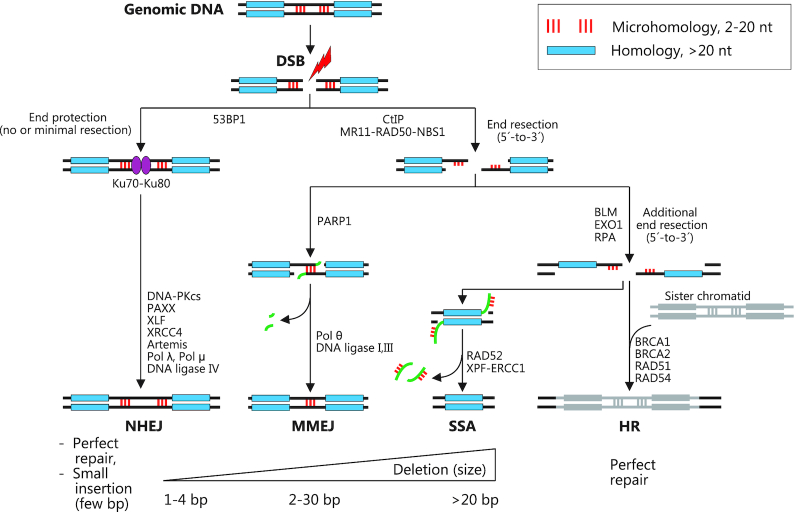Figure 1.
Cellular pathways for DNA double-strand break repair. Schematic representation of the four major pathways for repair of DNA double-strand breaks: NHEJ (non-homologous end joining), MMEJ (microhomology-mediated end joining), SSA (single-strand annealing) and HR (homologous recombination). Major repair proteins are shown with a focus on mammals. The figure illustrates that the repair pathways are competing. Repair pathway choice is governed by factors that include (i) the relative activities of the various repair proteins (modulated by expression level, the cell cycle etc), (ii) the absence or presence of microhomologies (red sticks) or longer homologies (blue bar) in the vicinity of the DSB and the availability of sister chromatid for homologous repair and (iii) the nature of the DSB (blunt, staggered, 5′ or 3′ overhang). DNA flaps produced and excised during MMEJ and SSA are shown in green. The major repair outcomes of the four pathways with approximate sizes of indels are indicated.

